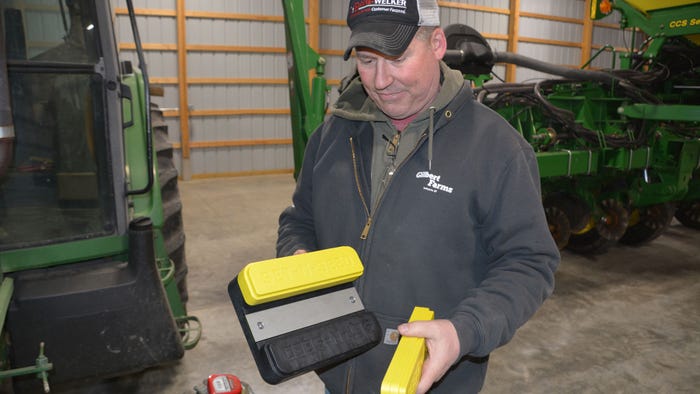
You may have heard coffee shop talk that unless you check each row carefully, actual planting depth can vary between rows on your planter — even on a new planter. It��’s not just idle talk. Multiple farmers have checked depth row by row and discovered this to be true.
Some growers figured out they could check planting depth before going to the field. They built a simple frame from boards, leaving a slot between two pieces for the disk opener. Then, with premarked lines at 1, 1.5, 2 and 2.5 inches, they adjusted the depth-setting T-handle until the bottom of the disk opener blade was at the 2-inch line.
“We found that to get the same planting depth, T-handles on some row units might have to be set at different notches,” says Steve Gauck, a regional manager for Beck’s based near Greensburg, Ind. “It’s something not too many people paid attention to before, but if you want to get planting depth right, it’s worth the effort.”
Easier method
Thanks to farmer ingenuity, since planting season ’22, there’s now a better way to check depth row to row than lifting each row unit with a forklift and placing a wooden contraption underneath.
The small device is marketed as the Set-N-Seed planter depth calibration tool. It uses a plastic base with a metal strip for disk openers to rest on, and plastic “building blocks,” each precisely a half-inch thick.
“I was anxious to try it, because I have wondered what happens to depth accuracy as disk openers and other parts wear,” says Pete Illingworth, who does equipment maintenance and planting at the Purdue-Throckmorton Agricultural Center near Romney, Ind. Indiana Prairie Farmer purchased a Set-N-Seed kit so Illingworth could try it.
It’s a simple process, he says. “We raised the planter a foot off the floor, set the T-handle on each row to the deepest setting, placed the kit on a floor jack and slid the jack under the row unit. As it lifted, disk openers contacted the metal strip, and gauge wheels rested on plastic blocks on each side. Then, we moved the T-handle as far as it would go, and it was set,” Illingworth explains.
The planter is a 12-row John Deere splitter with 24 row units. Illingworth’s target depth was 2.5 inches for corn and 1 inch for the back rows, which only plant soybeans. He determined earlier in the winter that there was enough blade life left for another season.
“A few showed more wear, but wear was fairly uniform,” he says. “Only a couple of the soybean-only rows needed a different setting for the T-handle. There was more variation in T-handle settings for corn rows to stay at 2.5 inches. That makes sense because corn units plant soybeans too, and cover twice as many acres per year, meaning they likely wear more. We will do it again after we install new disk openers next year.”
The Set-N-Seed planter depth calibration tool lists for $185. The tool is available from SI Distributing at sidist.com or from Shoup Manufacturing at shoupparts.com.
Check out the video below, where Illingworth summarizes the steps needed to determine the right T-handle setting to achieve the target seed depth. He then explains what he learned by checking planting depth on each row.
Read more about:
PlantersAbout the Author(s)
You May Also Like




